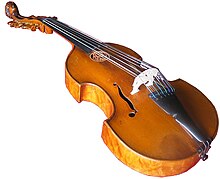Tritt auf die Glaubensbahn, BWV 152
| Tritt auf die Glaubensbahn | |
|---|---|
BWV 152 | |
| by J. S. Bach | |
 Schloßkirche, Weimar | |
| Key | E minor |
| Genre | church cantata |
| Occasion | Sunday after Christmas |
| Cantata text | Salomon Franck |
| Movements | 6 |
Tritt auf die Glaubensbahn (Step upon the path of faith), BWV 152, is a church cantata by Johann Sebastian Bach. He composed it in Weimar for the Sunday after Christmas and first performed it on 30 December 1714.
History and words
In Weimar, Bach was the court organist of Johann Ernst von Sachsen-Weimar. On 2 March 1714, he was promoted to Konzertmeister, an honour which included a monthly performance of a church cantata in the Schloßkirche. He composed the cantata for the Sunday after Christmas. The prescribed readings for the Sunday were from the Epistle to the Galatians, through Christ we are free from the law (Galatians 4:1–7), and from the Gospel of Luke, Simeon and Hannah talking to Mary (Luke 2:33–40). The Gospel follows the canticle of Simeon.[1] The text was written by Salomon Franck, the Weimar court poet, who published it in Evangelisches Andachts-Opffer in 1715. The Gospel refers to Isaiah (Isaiah 8:14–15) and Psalm 118 (Psalms 118:22), mentioning "a stone of stumbling and for a rock of offence" and the "stone which the builders refused". The poet refers to it, stating that God laid the stone of foundation, and man should not take offence. Jesus is then addressed as a stone beyond all gems, and the final movement is a duet of Jesus and the Soul, asking the Christian to reject the "world" and follow Jesus.[1][2]
Bach first performed the cantata on 30 December 1714.[1]
Scoring and structure
The cantata is scored for two soloists—soprano and bass—, and four solo instruments: recorder, oboe, viola d'amore, viola da gamba and basso continuo.[1] Bach himself wrote in the extant score "Concerto à 1 Flaut. 1 Hautb. 1 Viola d’Amour. 1 Viola da Gamba. Sopr. è Baßo coll’ Organo."[2]
- Sinfonia
- Aria (bass): Tritt auf die Glaubensbahn
- Recitativo (bass): Der Heiland ist gesetzt
- Aria (soprano): Stein, der über alle Schätze
- Recitativo (bass): Es ärgre sich die kluge Welt
- Duetto (soprano, bass): Wie soll ich dich, Liebster der Seelen, umfassen?
Music

The cantata is intimate chamber music for only two voices, soprano and bass, and four solo instruments.[1] Christoph Wolff notes the "colourful and delicate effects achievable with these forces".[2] The opening Sinfonia in two sections is reminiscent of a French overture, which Bach had used with a meaning in Nun komm, der Heiden Heiland, BWV 61, a few weeks earlier. The theme of the fugue is similar to that of Bach's fugue for organ, BWV 536.[2] The fugue is one of few instrumental fugues in Bach's cantatas.[1]
The first aria is given to the bass as the vox Christi, who invites to "step upon the path of faith". It is accompanied by an obbligato oboe and seems to illustrate the path (Glaubensbahn) in scales. The recitative is divided in two sections, following the contrast of "böse Welt" (evil world) and "seliger Christ" (blessed Christian) in recitative and arioso. The words "zum Fall" ("for destruction", literally: "for fall") is pictured in a downward leap of a tenth.[1] The second aria, sung by the soprano, is like a prayer. The middle section is only four measures long, and the da capo repeat is shortened. The voice is accompanied by recorder and viola d'amore.[1]
The final duet, a love duet of Jesus and the Soul, is structured in sections, separated by parts of the ritornello which is repeated completely in the end. Each section contains first dialogue, then a canon illustrating unity.[1]
References
Sources
The first source is the score.
General sources are found for the Bach cantatas. Several databases provide additional information on each single cantata:
- Cantata BWV 152 Tritt auf die Glaubensbahn history, scoring, sources for text and music, translations to various languages, discography, discussion, bach-cantatas website
- BWV 152 – "Tritt auf die Glaubensbahn" English translation, discussion, Emmanuel Music
- Tritt auf die Glaubensbahn history, scoring, Bach website Template:De icon
- BWV 152 Tritt auf die Glaubensbahn English translation, University of Vermont
- BWV 152 Tritt auf die Glaubensbahn text, scoring, University of Alberta
Category:Cantatas by Johann Sebastian Bach
Category:1714 works
